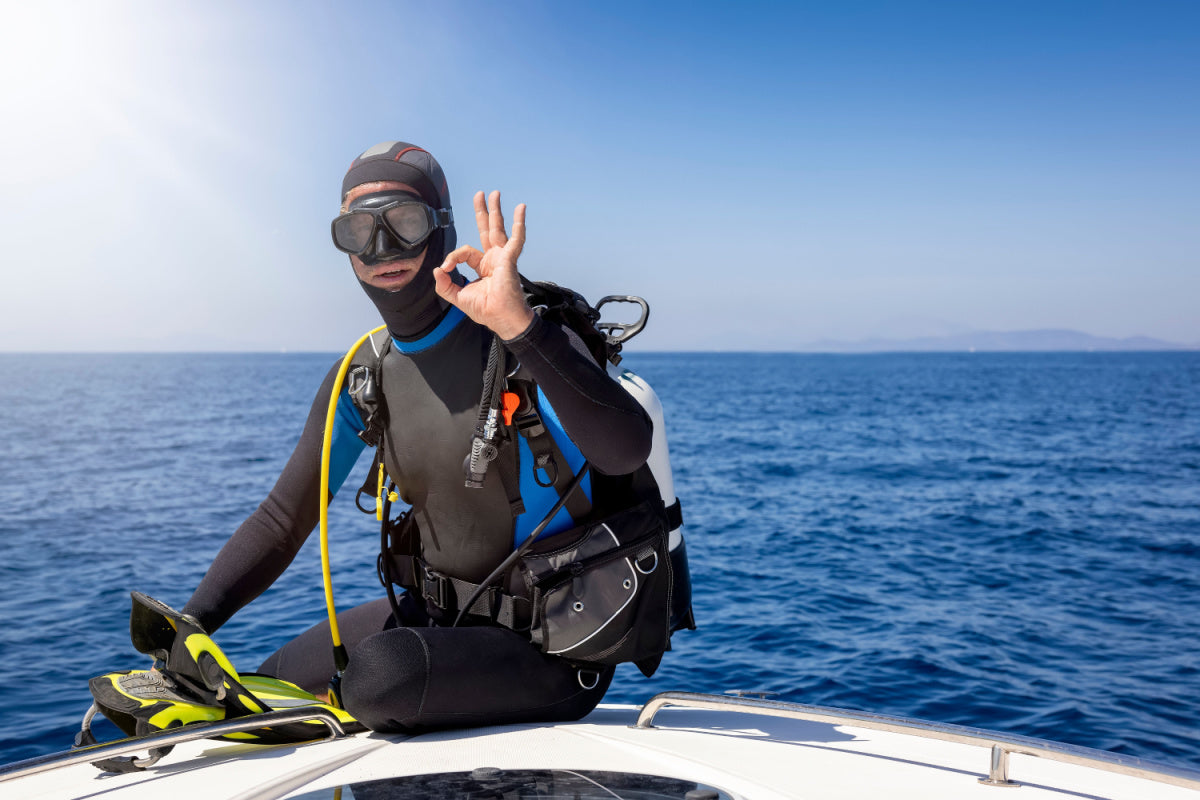All About Scuba Wetsuits: Everything You Need to Know

Plunging into the deep, mysterious blue of the ocean and being surrounded by a spectrum of vibrant marine life is what makes life worth living. Instead of shivering from the cool water against your skin, you're comfortably warm, shielded by a second skin of neoprene. This is the magic of a scuba wetsuit, and it's about to become your favorite piece of diving gear. This ultimate guide to scuba wetsuits will show you what makes them so valuable and how to find the perfect option for your next dive!
How Do Diving Wetsuits Work?
Wetsuits are made from a special material called neoprene, which is filled with thousands of tiny insulating gas bubbles. Think of it like a sponge, but instead of absorbing water, it traps heat. When you first jump into the water, a thin layer seeps into your suit. Your body heat warms up this water, and the neoprene locks it in, creating a warm, wet barrier between you and the frigid water outside.
The thickness of your wetsuit also plays a significant role in buoyancy. Thicker suits have more gas bubbles, which helps you float and makes diving a breeze. But be careful not to go too thick in warm waters, as you don't want to overheat.
Full Wetsuit vs. Shorty Wetsuit
Choosing your wetsuit is one of the most thrilling decisions you'll make as a scuba diver. Full wetsuits are the all-inclusive, head-to-toe outfits that might make you feel like a seal – in the best way possible! They provide maximum thermal protection, making them perfect for dives in cooler waters or prolonged underwater adventures. The full-length design protects against scrapes or stings from curious sea creatures or jagged shipwrecks. So, if you're planning to explore the chilly Atlantic or Pacific Oceans or have a lengthy dive ahead, going full suit is a wise choice.
On the flip side, we have the shorty wetsuits, the laid-back cousin of the full suit. Shorties, as the name implies, have short sleeves and legs, resembling a one-piece bathing suit with a bit more coverage. These suits are ideal for warmer waters where overheating can be a concern. They offer less insulation but give you greater flexibility and freedom of movement. Plus, they're easier to put on and take off, which can be a blessing after a long day of diving.
Whether you go full or short, the choice of a wetsuit comes down to your diving conditions and personal preference. It's your underwater adventure, so suit up in the style that suits you best!
Wetsuit Thickness
Wetsuit thickness is measured in millimeters and typically represented with two or three numbers like 3/2, 4/3, or 5/4/3. The first number represents the thickness of the neoprene around your torso, while the second (and third, if there is one) refers to the thickness around your limbs. The reason for this difference is simple: your body prioritizes keeping vital organs warm over extremities. So, a thicker layer is needed around the torso to maintain core body temperature, while thinner neoprene on the arms and legs allows for better mobility.
The thickness of your wetsuit matters because it directly affects both your warmth and flexibility underwater. A thicker suit means more insulation and buoyancy, ideal for chilly water. However, more thickness can also limit your movement, making swimming more strenuous. A thinner suit allows for greater flexibility and is perfect for warmer waters but provides less insulation.
Choosing the right thickness depends on the water temperature and your activity level. For example, a 2mm shorty might be perfect for a quick snorkel in the tropics, while a full 6/5/4 suit would be a better choice for a lengthy dive in colder waters.
Features of Diving Wetsuits
Wetsuits come with a variety of features and accessories that can significantly enhance your diving experience. Some suits boast built-in hoods, offering extra warmth and protection for your head during those frosty dives. Others feature sturdy knee pads to guard you from unexpected encounters with sharp rocks or reefs. And let's not forget about the various closure systems: back-zip suits are traditional and easy to don, while front-zip versions offer improved flexibility and better water-sealing capabilities. You can accessorize your suit with gloves and booties for added warmth and abrasion protection. Some wetsuits even have specially designed pockets or attachment points for your dive gear.
Where Can I Get Diving Wetsuits?
It's time to find the perfect wetsuit for your next underwater adventure. At Scubadelphia Diveseekers, we have a vast selection of high-quality wetsuits for divers, old and young. Choose from a vast array of options, like our Thermoprene 3mm Men’s & Women’s Back Zip Jumpsuit or our Henderson 3mm Child Back Jumpsuit for younger divers! No matter what you choose, make sure you select your wetsuit from Scubadelphia Diveseekers today.
 Submit your information and one of our scuba diving experts will be in touch!
Submit your information and one of our scuba diving experts will be in touch!
